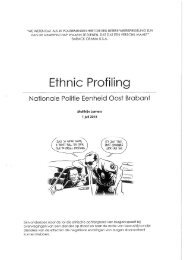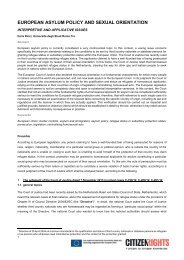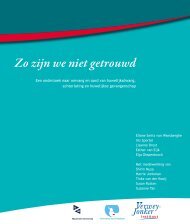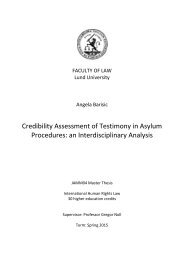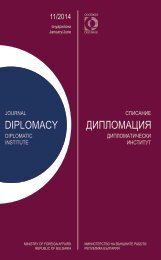AEMI
AEMI-2016-web
AEMI-2016-web
You also want an ePaper? Increase the reach of your titles
YUMPU automatically turns print PDFs into web optimized ePapers that Google loves.
48 <strong>AEMI</strong> JOURNAL 2015<br />
1937 immediately after the bombing of<br />
the towns of Durango (31st March) and<br />
Gernika (26th April).<br />
In order to frame the issues that surrounded<br />
and led to the evacuations we<br />
must remember the complex international<br />
diplomatic scenario of the Europe<br />
of the 1930s. The prevailing policies of<br />
appeasement had led to a Non-intervention<br />
Agreement signed by 27 countries1<br />
at the end of August 1936, which in<br />
turn was counterbalanced by the birth<br />
of a significant international volunteer<br />
movement.<br />
Aerial bombardment targeting civilians<br />
and killing thousands in Basque<br />
towns and cities was new within the European<br />
context. As a result large numbers<br />
of the population began to flee towards<br />
Bilbao, leaving their homes behind to<br />
seek refuge. An important consequence<br />
was that this generated a revived interest<br />
and a broader, often passionate, debate<br />
about the War of 1936 within the international<br />
community. It certainly played<br />
a decisive part in the general response<br />
concerning relief.<br />
The idea of large numbers of children<br />
being evacuated to other countries,<br />
which had previously been rejected by<br />
the foreign governments approached,<br />
became a real prospect. These would<br />
be the first massive child evacuations, a<br />
new phenomenon in European contemporary<br />
history. Due to the particularly<br />
brutal treatment to which the Basques<br />
were subjected there was a shift in public<br />
opinion, and to some degree governments<br />
relaxed their previous inflexible<br />
stance with regard to non-intervention.<br />
The treatment included:<br />
• Civilians targeted by aerial bombings.<br />
• Starvation and related illnesses aggravated<br />
as a result of:<br />
- An international embargo,<br />
which was in effect favoring the<br />
insurgents.<br />
- The Italian and German attacks<br />
of ships that carried supplies.<br />
- The naval blockade of Bilbao in<br />
March 1937, ordered by Franco to<br />
stop food entry, which generated<br />
much controversy with regard to international<br />
law.<br />
Consequently the Basque Government<br />
made an appeal to the world to save<br />
the Basque children. The cry for help<br />
throughout the territories loyal to the<br />
Republic was Salvad a los niños! (Save<br />
the children!), since they were the most<br />
vulnerable members of society.<br />
The next step for the Basque Government<br />
was to organize the evacuations;<br />
both the internal ones within the territory<br />
controlled by the Basque forces,<br />
for which they had the support of the<br />
Spanish Republican Government and<br />
the Generalitat (Catalan Government),<br />
and those to other countries. A variety<br />
of foreign institutions and committees<br />
collaborated in order to facilitate population<br />
displacements. The committees<br />
were mainly formed by political organizations,<br />
trade unions, and humanitarian<br />
aid groups, very often set up with the<br />
sole purpose of helping refugees in general<br />
or to provide asylum to a particular<br />
group, such as the children.<br />
Each evacuation was advertised in the<br />
local press, where information with regard<br />
to destination and other relevant<br />
matters was displayed. There was also an<br />
indication of any compulsory requirements<br />
that needed to be met, such as<br />
those related to the medical condition




